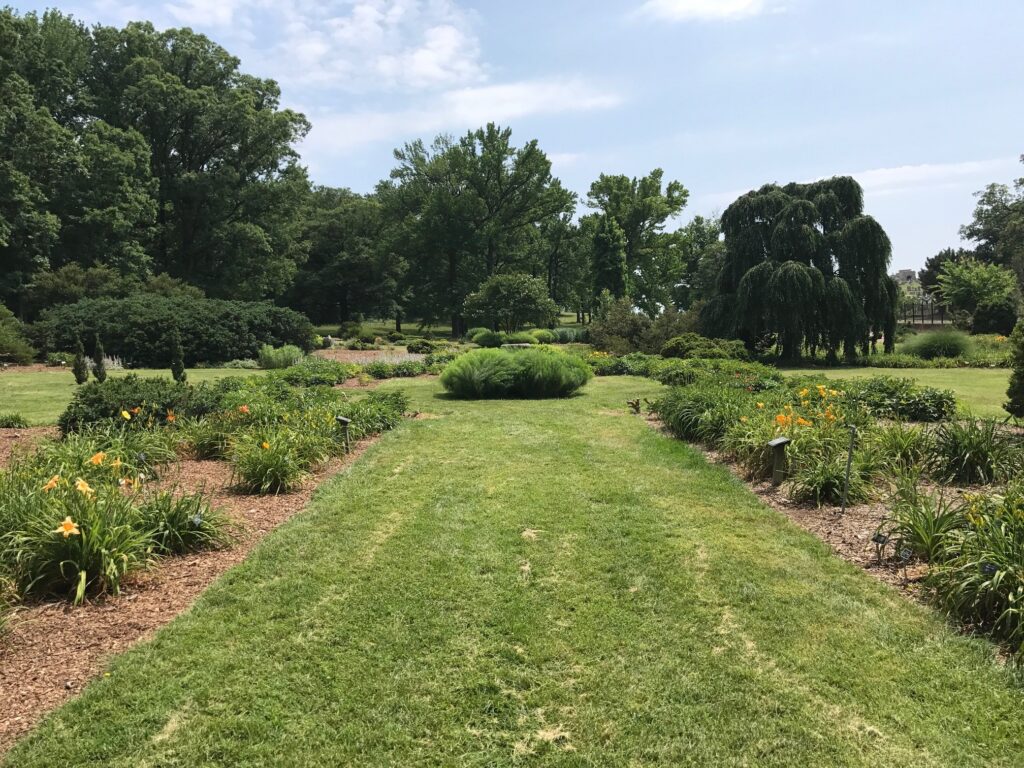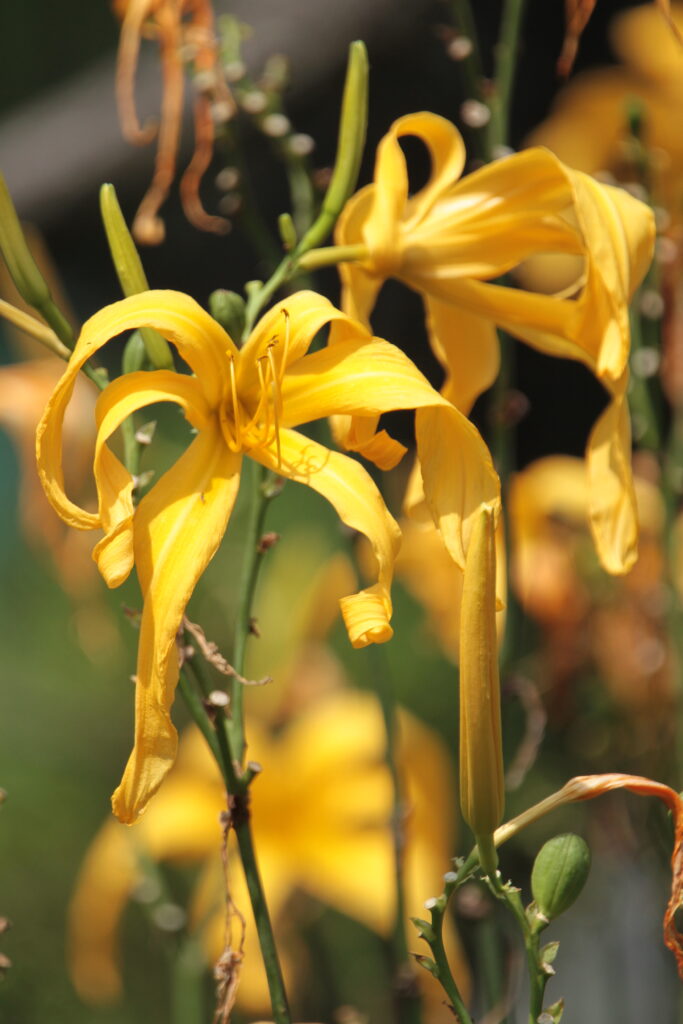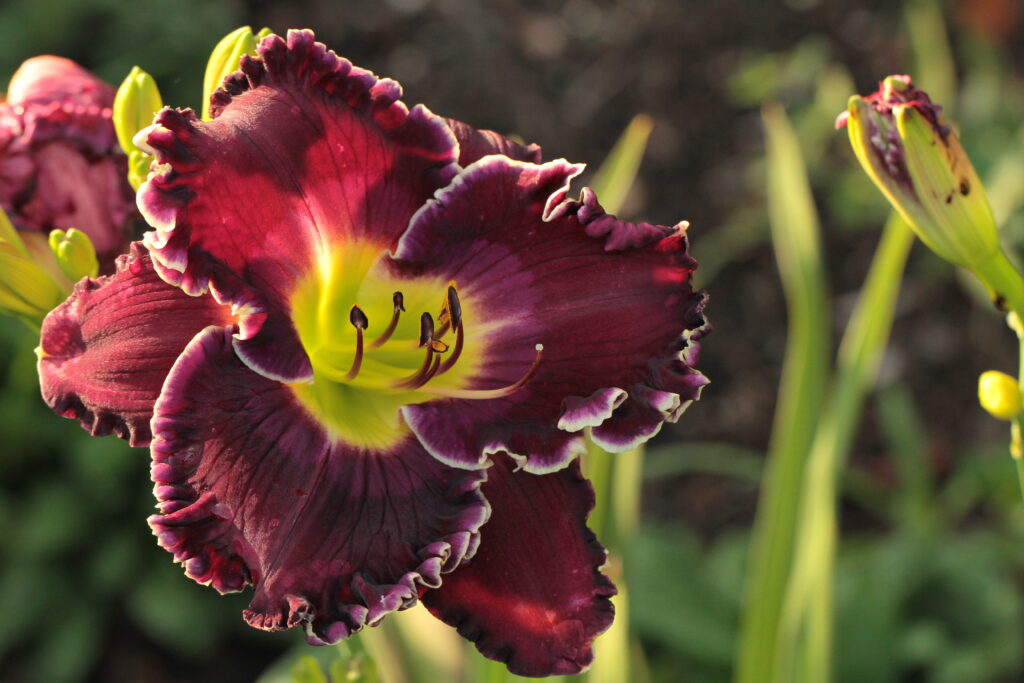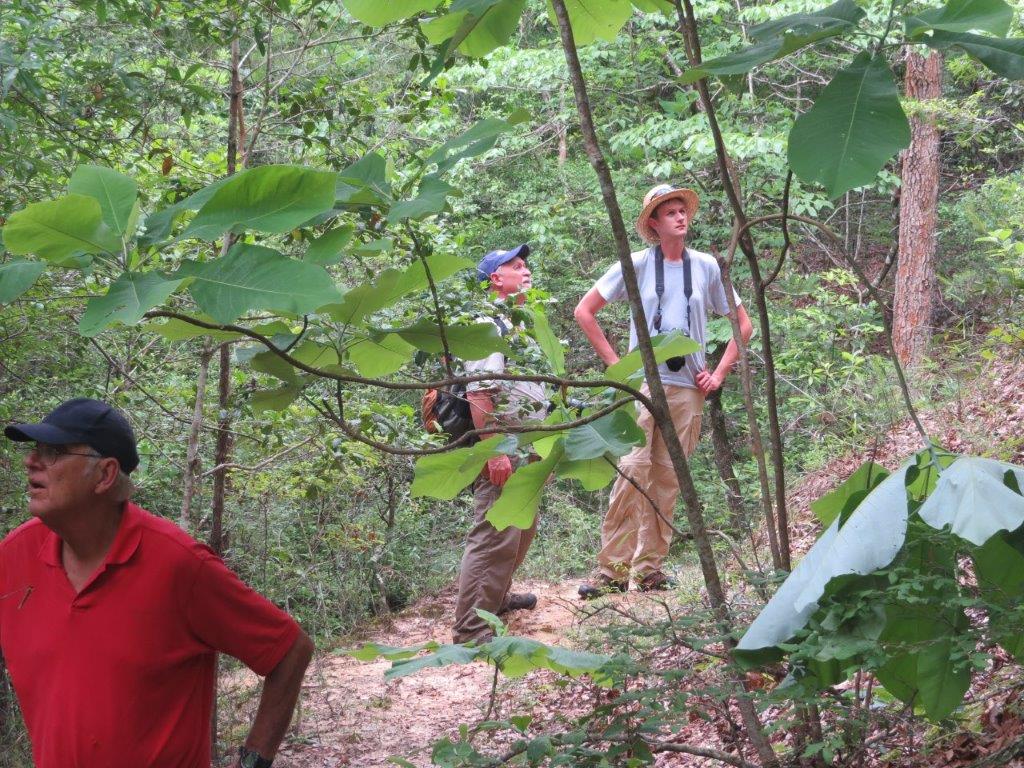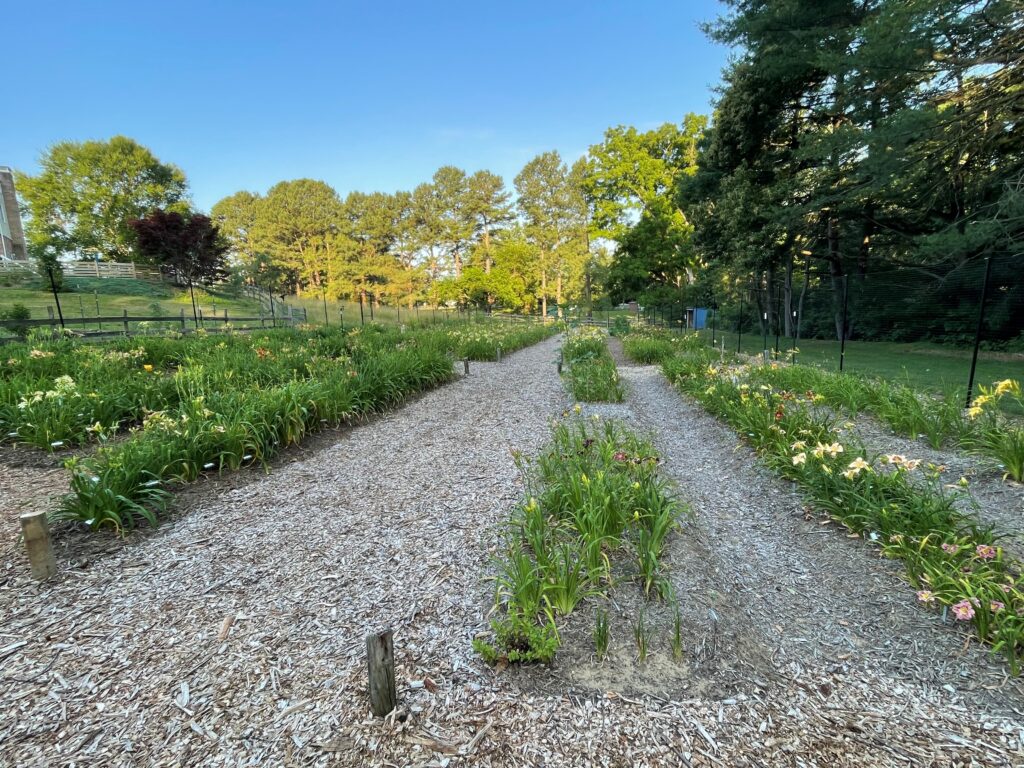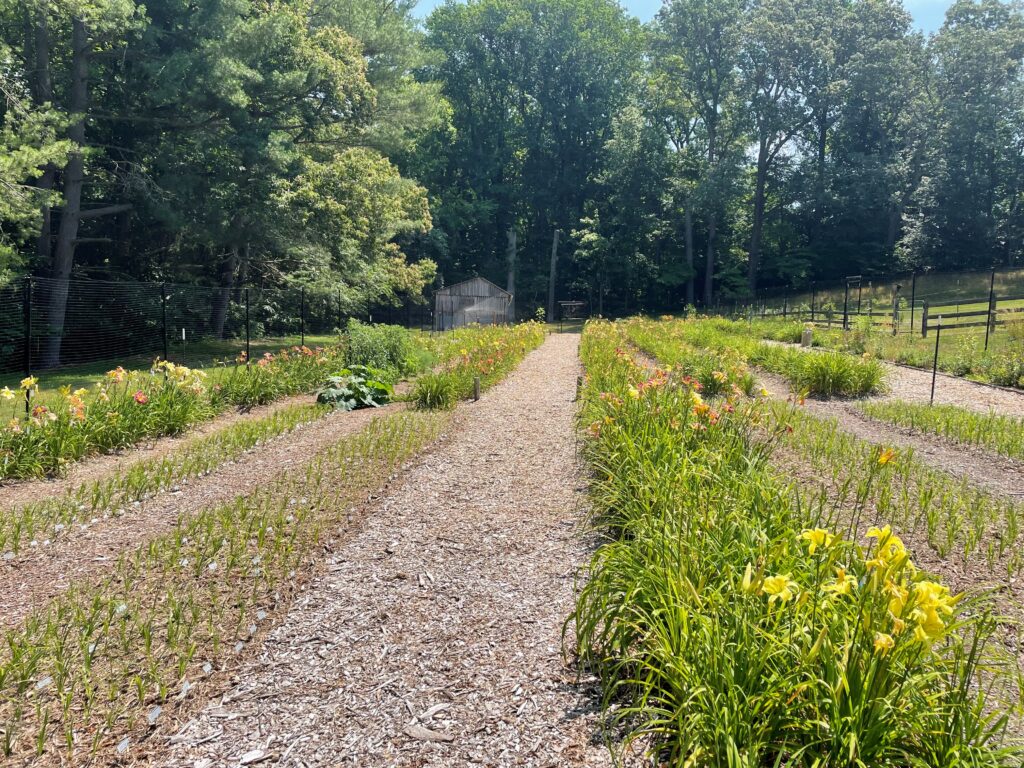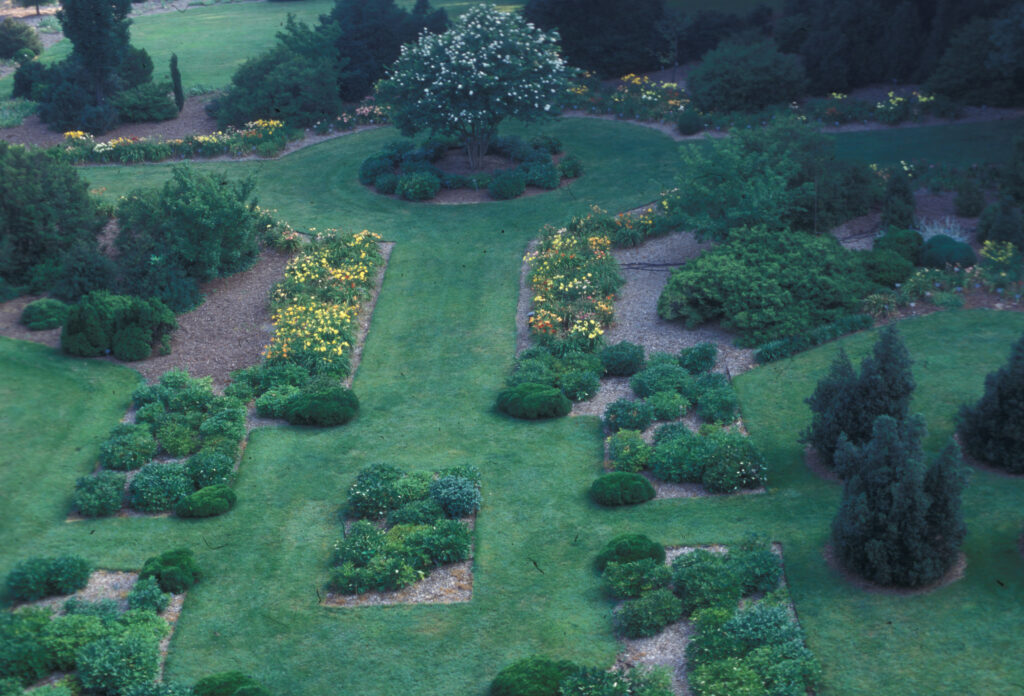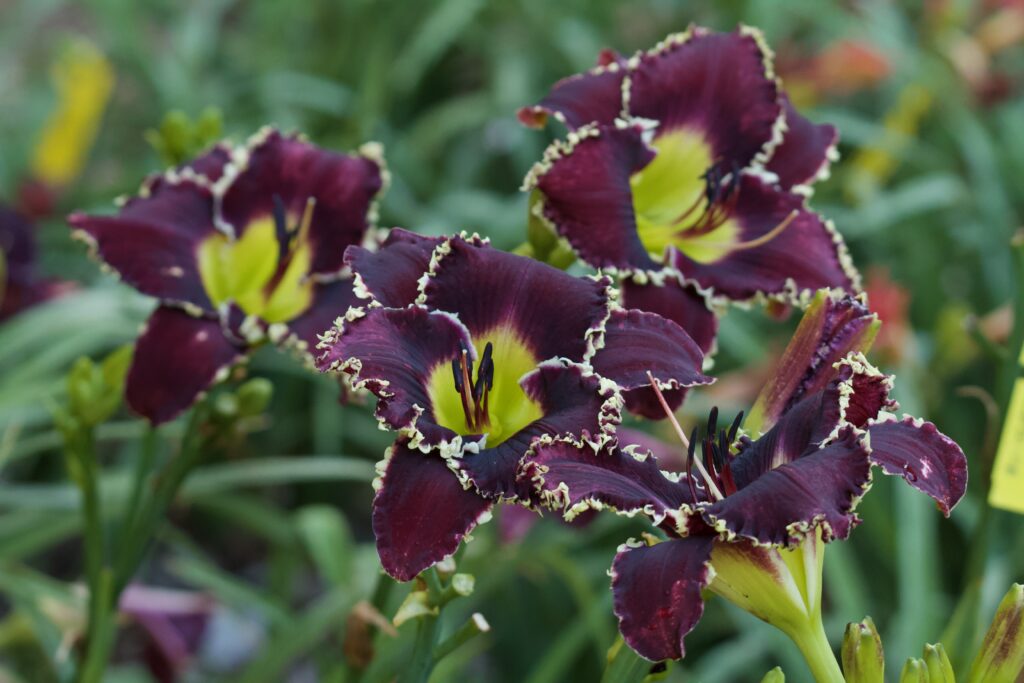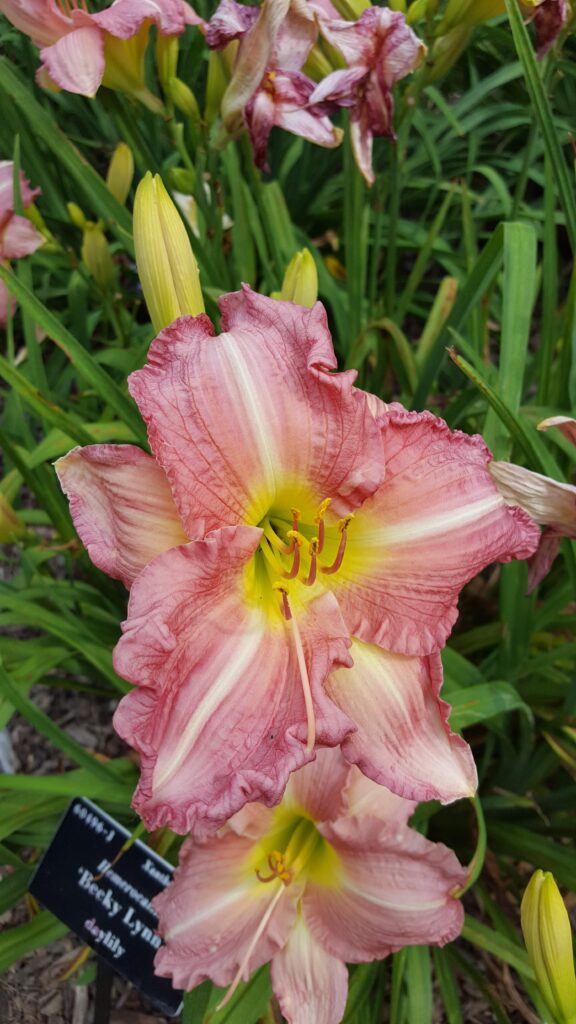
Unsung Heroes of Summer
Daylilies signal the arrival of summer. Each day is greeted by a multitude of new blooms sturdy enough to withstand scorching heat.
The U.S. National Arboretum has more than 500 daylily cultivars growing in its collection across more than 5 acres in National Boxwood and Perennial Collections, the Friendship Garden, Asian Collections, and the Introduction Garden.
A dazzling array of daylily blooms burst onto the scene starting in June with most continuing through August. Their colors and shapes stretch beyond the common yellows and oranges usually found in standard nurseries and in landscapes. The Arboretum’s diverse daylily collection includes pastels, pinks, green, deep crimson, purple, with varying petal shapes, and eye-popping multi-colored patterns like ‘Faith that Moves Mountains’ which has a dark purple flower with an eye that alternates between light lavender purple and merlot, a small white edge and green throat. Another cultivar, ‘Celebrating Gold’ is an outstanding performer, with bright apricot-gold flowers that seem to dance atop 4-foot stems. Visitors can find these behind the Arbor House in the Friendship Garden. The diminutive 10-inch tall gold and green ‘Chesapeake Belle’ is one of two daylilies developed by scientists at the Arboretum. It was released to the nursery industry in 1996.
Daylilies bloom along a grass path in the Perennial Collection (left). ‘Celebrating Gold’ daylily cultivar (center), and ‘Faith that Moves Mountains’ daylily cultivar (right). Photos courtesy of the U.S. National Arboretum. Click each photo to view in full screen.
It’s the daylily’s diversity that Christopher von Kohn, curator of the U.S. National Arboretum’s National Boxwood and Perennial Collections (since 2016) and its Friendship Garden (since 2018), is dedicated to sharing with the general public.
“They can really make a strong statement in the garden, they are a great looking flower. Some of them are highly fragrant, and it’s not one size fits all,” von Kohn says. “There are some that bloom at 12 inches tall, and some that bloom over my head. I’m six feet four inches tall, so something that’s really fragrant and literally eye level for me is kind of amazing to see! Some have flowers that are an inch-and-a-half. Blooms on some of the skinny-petaled forms can be 12 inches across, but they come in all shapes, sizes, and colors.”
Von Kohn brings deep knowledge about daylilies to the Arboretum. A self-proclaimed daylily fanatic, he began hybridizing daylilies in his early teens after learning about genetics in biology class. “I basically walked out my parents’ front door the summer after ninth grade,” he says. “I’m like, ‘what happens if I cross that daylily with that daylily?’ In 2004, I made a couple crosses, in 2005 I made about 30 seedlings, 50 the next year, and then 700 the year after that.” Von Kohn estimates that he has cultivated over 1,000 daylily seedlings every year since 2011.
“Growing up in Texas my parents had a decent-sized garden, and they enabled me to expand with the thoughts of what I wanted to do with daylilies. Gardening was sort of an escape for me.” Von Kohn’s passion for hybridizing set him on a path to earn his master’s degree in plant breeding and genetics at the University of Wisconsin-Madison and the ascent to his current role at the Arboretum.
Additionally, von Kohn has worked for three years with his partner developing an impressive daylily garden on their 3-acre property in Calvert County, Maryland. Their new garden was showcased during the American Daylily Society’s Region Three Annual Meeting in June 2024.
Chris von Kohn’s personal daylily garden. Photos courtesy of Chris von Kohn. Click each photo to view in full screen.
Daylily 101: Beauty for a Day
Although they are not true lilies, with the name daylily, you know what to expect. Daylilies belong to the genus Hemerocallis. The botanical name Hemerocallis is derived from the Greek words hemera, meaning day, and kallos, meaning beauty, referring to the fact that each flower lasts only a day. Yet daylilies make up for their short-lived blossoms with multiple flower buds on multiple stems (called scapes) that extend the flowering period of the plants by usually several weeks.
Native to Asia – primarily eastern Asia, including China, Korea, Japan, and southern Siberia – daylilies were brought to the United States via Europe as ornamental plants in the 1800’s. Daylily roots can survive out of the ground for weeks, so settlers migrating West packed them among their belongings to grow at their new homesteads. Today daylilies have naturalized and are both a mainstay in gardens and a common sight along roadways across the country.
Curating the Collection
The collection at the Arboretum was started in 1960, the year after the American Hemerocallis Society (AHS) hosted their Annual National Convention in Washington, D.C. The AHS donated 150 daylily cultivars that had been brought in as guest plants for the Society’s traditional display.
Lynn Batdorf, who served as curator of the Boxwood and Perennial Collections from 1977 to 2013, worked to organize and expand the daylily collection during his tenure. The AHS’s donated daylilies were added along with spring flowering herbaceous peonies to the then recently-planted Boxwood Collection to add summer interest. Batdorf worked in partnership with other organizations like Longwood Gardens to coordinate plant gathering expeditions in multiple countries. He took a thoughtful approach to curating the collection, adding seven to eight cultivars each year to represent the ever expanding color palette and features being rapidly cultivated by hybridizers across the decades.
“The average person thinks about Hemerocallis fulva, the roadside daylily or a ‘Stella de Oro,’ and so those are yellow or orange, period. But the diversity, it’s endless the different types of daylilies. Mid-season you can get your whites, pinks, creams, melons, reds, browns, blacks, dark blues and just, you know, the panorama of colors. I added the ‘Milk Chocolate’ daylily to the collection because I thought it was a milestone in breeding, because you know people don’t think about brown flowers.”
“It was a fun intellectual challenge that I enjoyed and embraced,” says Batdorf. “It was educational from that standpoint to show people what’s out there that is different from what is on the market. I think it is one of the greatest strengths of the Arboretum.”
As its longest-serving curator, Batdorf was instrumental in organizing the daylily collection located in the Boxwood Garden into beds dedicated to cultivars that had won specific awards from the American Daylily Society. The two that are the most complete are the Annual Stout Silver Medal Award, which is the Society’s highest award based on the most votes for overall garden merit. There is also the Lenington All-American Award for the plant being able to be grown in several different zones in multiple regions in the U.S.
Curator von Kohn’s knowledge of the species and connection to the daylily community is an asset for the Arboretum that goes beyond the basic landscape. He says he is dedicated to building the collection to include daylilies that are outstanding garden plants, are current, and are genetically important.
There are more than 100,000 daylily cultivars registered with the American Daylily Society – also known as the American Hemerocallis Society. Von Kohn has registered four of his own (‘Cherry Disposition’, ‘Grape Freckles’, ‘Nasty Woman’, and ‘Perpetual Pink’).
‘Cherry Disposition’ (left) and ‘Nasty Woman’ (right) are two daylily cultivars that Chris von Kohn has hybridized and registered with the American Daylily Society. Photos courtesy of Chris von Kohn. Click each photo to view in full screen.
“Not all of the hundred thousand daylilies that are out there are really unique or great garden subjects,” von Kohn says. “Some of them have amazing flowers, but aren’t the easiest to grow or have a shorter bloom season than you would want to see in a public garden space.”
“I don’t want to just bring in a plant because it’s pretty. It’s got to have some more substance to it, and at the very least, be an outstanding performer in a garden. If not, I think the plant should have a better story behind it, for example, the daylilies named after a person with a rich history in horticulture or a long history with the National Arboretum, like career plant geneticist George Darrow.” Darrow’s contributions to the U.S. Department of Agriculture (USDA) as a small fruit and berry breeder were impactful to fruit crop production. In his retirement, he was a daylily breeder. Dozens of Darrow’s late-flowering hybrids, called the Olallie daylilies, are named after his pick-your-own berry farm in Maryland. The Arboretum hosts one of the most comprehensive collections of Darrow’s cultivars, which thrive with minimal care near the Bladensburg Road fenceline.
Von Kohn says the Perennial Collection is in the best shape it’s been since pandemic-induced staffing restrictions (four people on site from March through May 2020, on 450 acres) led to a weeding and maintenance backlog. He is currently assessing what has been able to thrive under adverse conditions, and which cultivars would be the best options for display. Von Kohn also continues to acquire additional cultivars through donations from hybridizers and partnerships with organizations like the Northern Virginia Daylily Society, and other botanical institutions like Meadowlark Gardens in Virginia and Longwood Gardens in Pennsylvania.
Both Batdorf and von Kohn want people to know and appreciate daylilies for what they bring to gardens and what we can learn from them: these plants are tough, reliable, adaptable, and relatively pest-free. In addition to visual diversity, the preservation of diverse germplasm—genetic material like seeds, tissues, and tubers—is important to ensure that any novel genes involved in disease or pest resistance are not lost in cultivation. By maintaining genetic diversity in collections such as the Hemerocallis collection, the USNA serves as an important source for advancing breeding objectives in areas such as disease resistance or alternately novel ornamental traits.
Asked if he has anything on his wish list, von Kohn says he dreams of adding some of the biggest daylilies to the collection as a contrast to the collection of miniature and small flowered varieties. These include: ‘Highlight’, which is registered as having light yellow flowers on 96-inch scapes that tower 6-7 feet tall and the deep red ‘Goliath on Steroids’ and the yellow and green ‘Coronal Mass Explosion’, each of which sport spider-shaped blooms spanning 16 inches across.
While the majority of the daylilies at the Arboretum grow in the Perennial Collection which is currently closed because of boxwood blight, visitors can also enjoy these summer gems in the Asian Collections, Friendship Garden, and the North Court of the Introduction Garden. Fortunately, boxwood blight is not a threat to daylilies or the peonies in the Perennial Collection. They are not affected by the same diseases as boxwood. Von Kohn predicts the National Boxwood Collection will soon be open to visitors.
Bridget DeSimone is a communications consultant and writer for Friends of the National Arboretum. She is an experienced public relations professional and journalist who has worked extensively with scientific researchers and nonprofit organizations.


